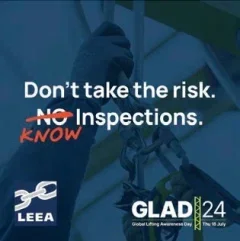
Lifting equipment keeps sectors including manufacturing, logistics, ports, maritime, construction, mining, quarrying and renewables operating. Add these to a plethora of nonindustrial sectors such as entertainment, medical, aeronautical, agricultural and the military and the ubiquity of lifting equipment is clearly apparent.
Throughout these sectors there will be a variety of cranes, hoists, platforms, cradles and their associated chains, ropes, slings and other tackle that will require pre-use checks, inspection, maintenance and Thorough Examination.
Lifting Inspectors and service engineers will ensure the safety and suitability of the equipment used for lifting loads in order to meet regulatory requirements.
All lifting equipment needs to be inspected and maintained, not only to ensure reliability, which will minimise downtime and boost efficiency, but more importantly, to make lifting tasks safe. In any lifting operation, ignorance can all too easily result in severe consequences that can result in an accident, a visit from health and safety inspectors and punishment. Failures are entirely avoidable provided everyone in the chain of responsibility performs their role and understands that lifting equipment has to be looked after.
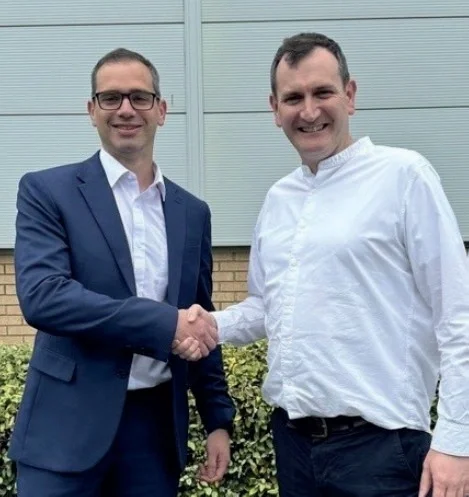
Inspection of lifting equipment is usually required by legislation. It is the responsibility of the of the relevant competent person to assess the risk and conditions of particular situations and to determine whether all conditions are met to guarantee the safe use of the equipment. Competency is based on practical and theoretical knowledge, experience, training, skill, and behaviour.
Usually, there are three levels of inspection considered and these are described in LEEA’s COPSULE (Code of Practice for the Safe Use of Lifting Equipment). This free to download stateof- the art guide enables lifting equipment users all over the globe and across different industries to meet best practice.
PRE-USE INSPECTION
The first level is the pre-use inspection. According to COPSULE 1.2.3.1, this is normally completed by the operator of the equipment before each use and in accordance with the manufacturer’s instructions. It is a basic check for obvious signs of damage. Typically, the operator will be looking for damage such as dents to protective cases, permanent deformations, abnormal noises, presence of and correct marking, or changes in function for example. Any such findings should be reported to the inspection/maintenance personnel.
INTERIM INSPECTION
The interim inspection, also referred to as frequent inspection, is the second level. According to COPSULE 1.2.3.2, the nature and extent of the inspections is derived from a risk assessment. Interim inspections focus on critical components identified in the risk assessment that may become a danger before the next periodic thorough inspection (examination). The number and frequency of these inspections is also determined by the risk assessment and the manufacturers literature. Interim Inspections are often done at the same time as planned maintenance or following a repair.
THOROUGH EXAMINATION
Finally, there is the thorough examination. According to COPSULE 1.2.3, this inspection level may also be called periodic inspection or thorough inspection in different contexts.
It is a visual examination of the lifting equipment carried out by a competent person (usually a third party) carefully and critically and, where appropriate, supplemented by other means such as measurement and testing in order to check whether the equipment is safe to use.
It checks the suitability of the equipment and the inspection / maintenance regime. If a defect affecting the safety of the equipment is found, it suggests there is an issue with the inspection/maintenance regime, the competency of the inspectors or maintainers, the product’s fitness for purpose, etc.
In essence a thorough examination is a safety net, used to identify inadequacies in the inspection/maintenance regime and thereby provide a means of improvement and prevent recurrence. This means that the root cause of any defect found following a thorough examination should be investigated and rectified with appropriate measures to prevent reoccurrence.
USE EXPERT LIFTING INSPECTORS
As a safety organisation with zero accidents and injuries being our prime goal, LEEA wants to remind end users how important it is to use expert Lifting Inspectors who have expertise and high-quality training. Always look for the LEEA logo, whether it is on the in-house Lifting Inspector’s qualifications or an external service provider, because it gives assurance of safe and expert practice when it comes to lifting equipment and services such as inspection.
DON’T TAKE THE RISK: KNOW INSPECTIONS
With improving skills being vital to the lifting industry, the Lifting Equipment Engineers Association continues to evolve its member led, global training. Available via a variety of channels and validated by the exclusive TEAM card, it will improve the bottom line as well as safe practice, as Andrew Wright, head of Learning and Development at LEEA, explains.
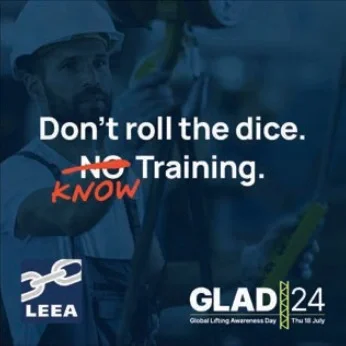
Through creating sustained expertise, training allows LEEA members to add enormous value to their customers, in addition to assiduously adhering to best practice and quality in their field to support supply chains throughout industry. The benefit will show up on the bottom line but, more importantly for the lifting industry, training nurtures best practice when it comes to working in safety.
With a range of training courses on the inspection and examination of lifting equipment, LEEA’s training offer keeps evolving to ensure it is more engaging and occupationally relevant so that trained workers contribute to their organisational challenges and improve safety. The Association is working with partners to help deliver our training globally and raise competency in all countries through our Licensed Training Scheme. The aspiration is that LEEA produces content which our third party trainers will be delivering, increasing capacity in our training network.
This benefits everyone who uses LEEA training because they get it sooner, the training reflects regional variations and they don’t have to travel as far. It’s more effective and more efficient and it frees us up here at HQ to concentrate on delivering better quality training materials and adding new courses to our catalogue. The scheme has been piloted in Australia and New Zealand, which has produced great learning outcomes. The next step is the Middle East.
LEEA’s training centre offers classrooms, a workshop and breakout areas. Facilities include modular practical areas for the courses offered, which include: Foundation Certificate (FOU), Lifting Accessories (LAC), Manual Lifting Machines (MLM), Powered Lifting Machines (PLM), Bridge and Gantry Cranes (BGC), Supporting Structures (SUP), Mobile Cranes (MOB) and Offshore Containers (OSC). Each LEEA training course incorporates an assessment to verify the trainee has retained key knowledge and skills during the course.
Training courses on LEEA’s Academy 2 platform are available online through our eLearning portal, face-to-face at Huntingdon or on site, and by virtual classroom (webinar) using technology we invested in during 2020.
LEEA was an early embracer of the new world of digital training, which has enhanced the way we do things for our membership.
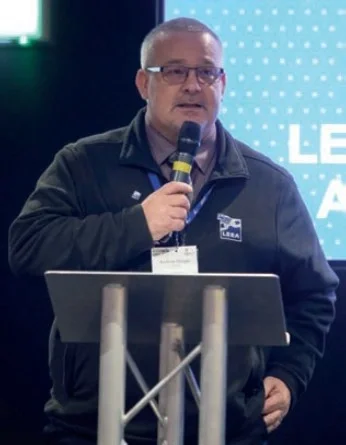
Most of LEEA’s suite of training courses are available in languages other than English: Bahasa, Simplified Chinese, Arabic, Brazilian Portuguese, French and Spanish, and we continue to add others to meet the needs of our global membership.
‘End User Guidance’ and ‘Introduction to Lifting Equipment’ are new courses introduced to provide members and industry stakeholders with specific, information supporting their continuous professional development. New qualifications will be added digitally to the TEAM card. The all-new, grey colourscheme TEAM card, which incorporates NFC (Near Field Communication) technology, makes it easier for members to present their qualifications: a tap against any smart phone will provide verified, live data which is instantly updated by the LEEA team as changes occur. These include new validation dates, change of employment details, a new photograph and when new qualifications are achieved. The TEAM Card is accredited by CSCS (Construction Skills Certification Scheme) and its logo, in hologram form, is shown on the card.
CONTINUING OUR TRAINING EVOLUTION
Having listened to members’ feedback and their business needs for competent workers after rolling out Academy 2 in 2021, LEEA’s training continues to evolve, with work commencing on our new ‘Academy 3’ curriculum and training course design.
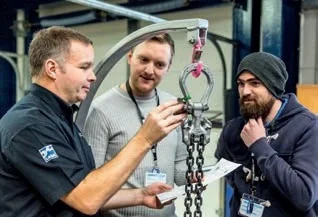
In the Academy 3 Foundation Certificate, our knowledge, skills and behaviours focus on ethical actions that support our vision by promoting the importance of these factors, and the consequences of their omission. It supports LEEA’s vision of a lifting industry with zero accidents, zero injuries, and zero fatalities..
The Foundation Certificate covers three areas; Safety to ensure trainees can look after themselves; Competence, about knowing what you can and cannot do and Professionalism, which includes diligence, leading by example and communication.






